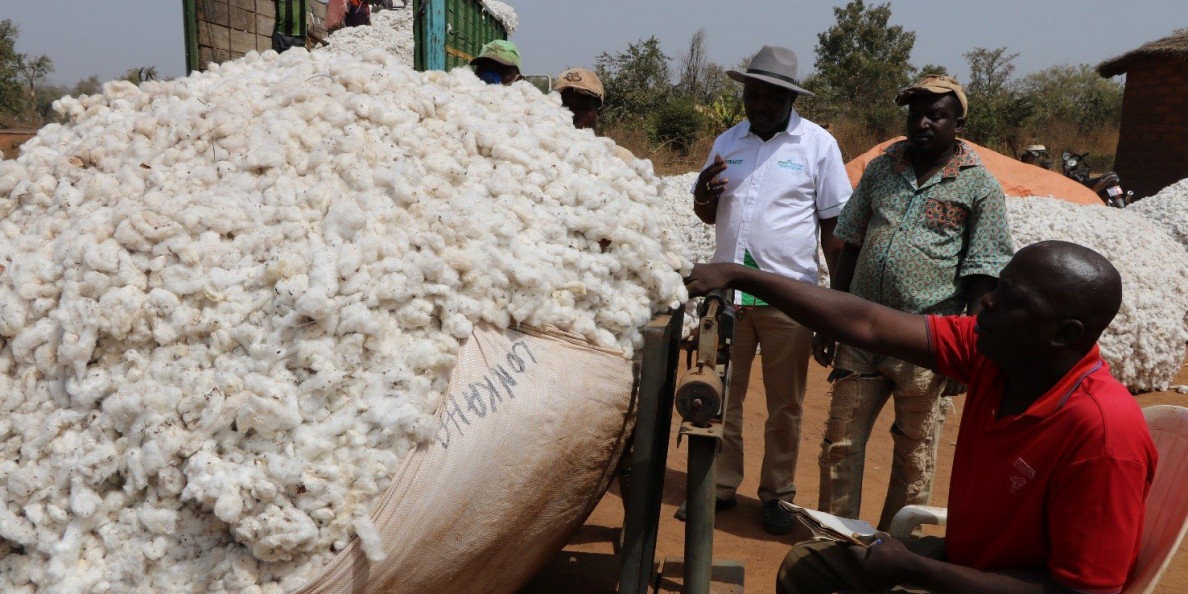Several cotton farmers have raised concern over this year’s producer price, arguing payments, which will largely be made in RTGS dollars, the electronic form of the Zimbabwe dollar, would kill the appetite to produce the commodity.
They are also lobbying for the larger part of their commodity to be paid in foreign currency in light of depreciation of the Zimbabwean dollar, which is fixed at 1:25 on the official market, but trading around 1 to 80 on the black market against the US dollar.
In Zimbabwe, prices normally track the parallel market rates.
In fact, most businesses including supermarkets, retailers and manufacturers are now using black market rates when modelling prices for goods and services.
The official exchange rate has not moved since March when it was fixed by the Reserve Bank of Zimbabwe to provide certainty of pricing following the outbreak of coronavirus.
Last week, Government set the cotton producer price at $43,94 (US$1,75 using official rate) per kilogramme.
The producer price is a combination of US dollars, Zimbabwean dollar cash and electronic money.
Farmers will be paid US$10 per each bale (200kg) of cotton delivered, 38 percent of the value of a bale in Zimbabwean dollars cash with the remainder transferred electronically to farmers’ mobile money wallet accounts.
Farmers are concerned that the premiums, which normally range between 40 percent and 50 percent, added on prices when paying using mobile money would effectively halve the value of 62 percent of their earnings paid in local currency.
The Member of Parliament for Gokwe — Kabuyu Constituency Leonard Chikomba, also a prominent cotton farmer ,said given the volatility of the domestic currency and premiums associated with mobile money transactions, the farmers would hugely be disadvantaged.
“The price of cotton was announced late. On paper it is reasonable but am saying this with reservations,” said Mr Chikomba.
“This is because when the price was announced, prices shot up.
“With people in my constituency, cotton farming is our major source of livelihood.
“People around here love farming but the issue of being paid in RTGS (electronic) is sad. Retailers are charging exorbitantly in RTGS.
“If we are paid 43 RTGS in our shops it will be valued at $15 in cash.
“If it’s difficult to pay farmers in US dollars or Zimbabwean dollar cash, then Government should be able to enforce the law and deal with those charging huge premiums on mobile money transaction.”
Another farmer in Gokwe, in the Zhombe area, Mr Albert Makovere appealed to authorities to avail physical cash when paying cotton farmers to avoid farmers being prejudiced.
“The problem is being paid in RTGS. In our area, electronic money is not always accepted.
“At least Government should provide cash be it in bond or USD.
“For us to enjoy purchasing with this money we have to go to nearby towns yet the money should just circulate among us and develop our area.
“ It’s even costly to go to these places as transport fares are exorbitant.”
Mr Joseph Ziumbwa, another farmer added: With RTGS (mobile money) we feel we are just being exploited and enriching some people enjoying our sweat.
“Am of the opinion that the price of cotton should be gazetted (indexed in foreign currency) before we start farming the crop so that we are able to plan but with the current scenario you can’t plan anything.
“ You just wait in vain and as we speak prices are going up. So maybe by the time people are paid, the announced price would be close to nothing.”
The season, which normally begins end of May to September, was delayed due to prolonged consultations on the producer price after global lint prices crashed due to the coronavirus pandemic.
Early last month, global lint price plunged to lowest levels since the global financial crisis in 2008 due to corona virus, denting growth prospects of Zimbabwe’s cotton industry, which has been on a recovery path since 2015.
The lowest price was in 2008 during the global financial crisis when prices fell to US$44 per pound.
This year, cotton production is estimated at 101 000 tonnes, an increase of 32 percent from 77 000 tonnes produced last year, according to the Second Round Crop and Livestock Assessment Report.
This was due to increased coverage of the Presidential Inputs scheme. The scheme was introduced in 2015 after Government moved in to revive the cotton industry.
After peaking at 352 000 tonnes in 2011, output declined to 28 000 tonnes three years later, the lowest in nearly two decades partly due to lack of adequate funding and poor prices.
With the coming in of the Presidential Inputs Scheme, coupled with renewed interests by private players to finance the crop, who last year financed about 30 percent of production, the sector has recorded a significant recovery.
In light of climate change, some farmers are also increasing acreage as the crop is generally less waster intensive.


